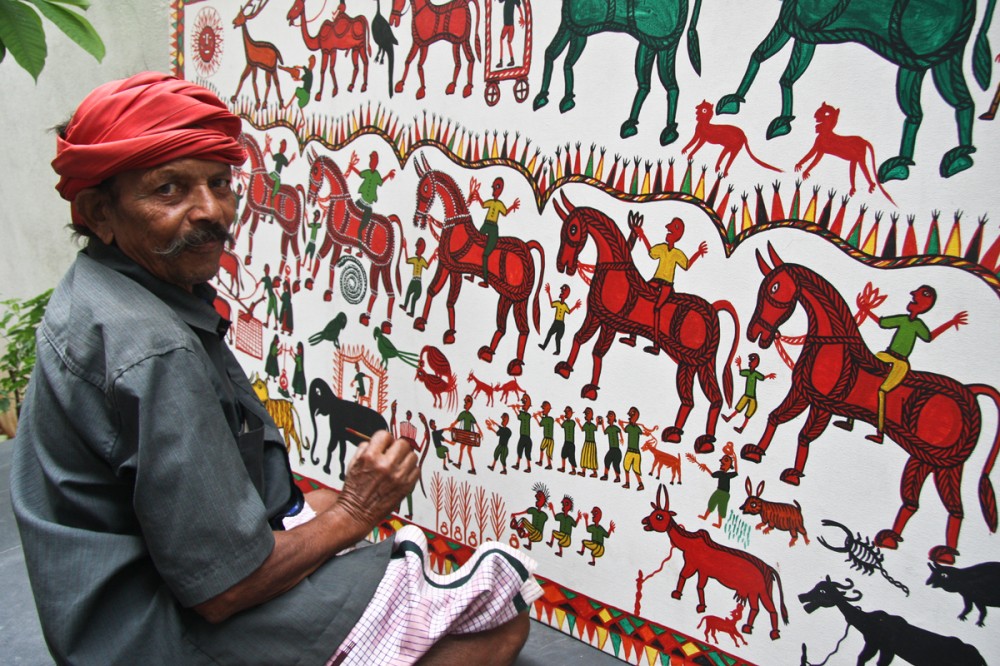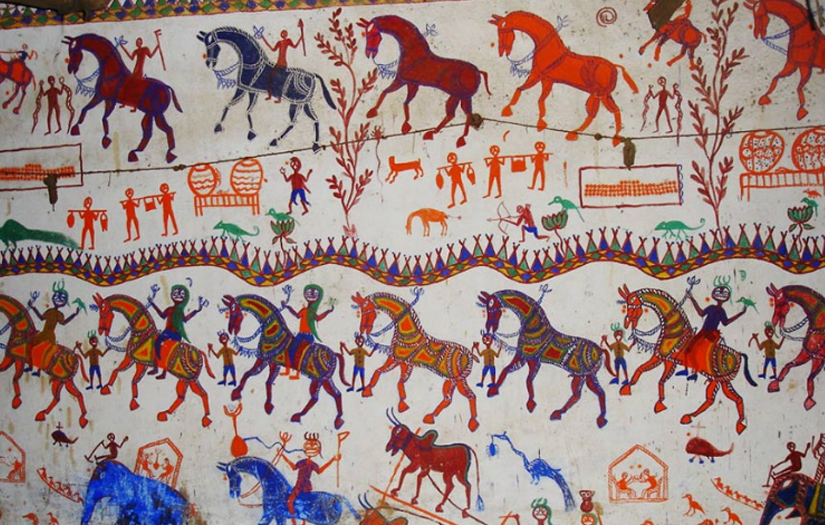Introduction
Pithora painting, a traditional folk art form, holds a special place in the cultural heritage of India, particularly in the states of Gujarat, Chhattisgarh, and Madhya Pradesh. This unique art style is not only visually captivating but also deeply rooted in the cultural fabric of these regions. In this article, we will delve into the fascinating world of Pithora painting, its origins, significance, and the distinctive features that make it a cherished art form.
Pithora Painting of Gujarat: A Colourful Expression of Tradition
Pithora painting in Gujarat is a visual feast of vibrant colors and intricate designs. Often created during festivals and celebrations, these paintings narrate stories of folklore, mythology, and daily life. The art form typically features depictions of horses, deities, and nature, showcasing the artist’s skill in blending tradition with creativity.

Pithora Painting of Chhattisgarh: Where Tradition Meets Spirituality
Chhattisgarh is another region where Pithora painting flourishes, deeply ingrained in the spiritual practices of the local communities. This art form is often associated with rituals and ceremonies, serving as a visual representation of prayers and invoking divine blessings. The unique blend of spirituality and artistry makes Pithora painting a cherished tradition in Chhattisgarh.

Pithora Painting of Madhya Pradesh: A Cultural Mosaic on Canvas
In Madhya Pradesh, Pithora painting reflects the rich cultural diversity of the state. Artists here infuse their creations with regional nuances, portraying the essence of local life and customs. The art form acts as a cultural mosaic, preserving the heritage of Madhya Pradesh through vivid colours and intricate detailing.
Folk Art Pithora Painting: A Time-Honoured Craft
Pithora painting is not merely a form of artistic expression; it is a time-honoured craft passed down through generations. The artists, often belonging to tribal communities, skilfully carry forward the legacy of Pithora painting, contributing to the preservation of cultural identity and heritage.
About Pithora Painting: Origins and Evolution
The origins of Pithora painting can be traced back to ancient times when communities used it as a means of storytelling and expression. Over the years, the art form has evolved, incorporating new themes while staying true to its cultural roots. Understanding the history of Pithora painting adds depth to the appreciation of this unique folk art.
Conclusion
India’s cultural diversity, especially in Gujarat, Chhattisgarh, and Madhya Pradesh, is exemplified by the Pithora painting. Intricate shapes and vivid colours capture viewers, and as a traditional folk art form, it builds a link between the past and present. For many generations to come, Pithora painting will be a vital component of India’s cultural fabric thanks to the ongoing practice of this distinctive art form. Discover the world of Pithora painting, a captivating exhibition of artistic talent where faith, tradition, and art collide.
Feature Image Courtesy: Gatha





